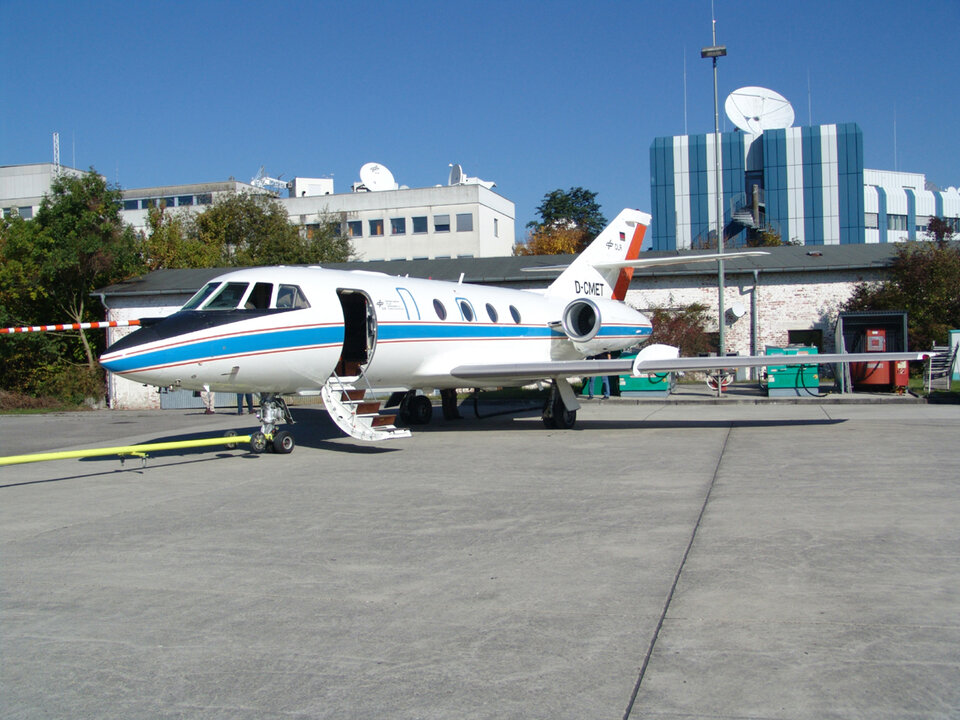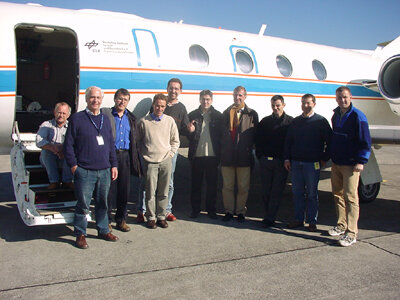First test flights of ALADIN airborne prototype exceed expectations
The ADM-Aeolus mission has just passed another milestone with the success of the first ALADIN Airborne Demonstrator (A2D) test flights. Essentially, the aim was to ensure that the A2D was compatible with the aircraft; however, it was also revealed that the A2D was receiving atmospheric backscatter data, which went beyond what was expected from these first flights.
The Aeolus mission will take an innovative wind lidar called ALADIN (Atmospheric LAser Doppler INstrument) into space to measure wind profiles in the lowermost 30 km of the Earth's atmosphere. ALADIN is a direct detection wind lidar capable of using the backscatter signal from both molecular (Rayleigh-) and aerosol (Mie-) scattering to retrieve independent wind information.

Although the basic measurement concept has already been used in several ground-based lidar instruments, ALADIN combines new techniques, such as the combination of molecular and aerosol receivers and the use of special charge-coupled devices with on-chip storage accumulation to improve the detection sensitivity.
Since Aeolus employs new technology, the precise design of the lidar along with the associated signal and data processing techniques need to be tested in several pre-launch campaigns by flying an airborne prototype – the A2D.

Technically similar to ALADIN, the A2D, which is being developed by EADS-Astrium SAS, in Toulouse, France, will initially be used to validate the measurement concept in realistic conditions by performing ground-based measurements at a site providing other reference wind measurements. Later, the A2D will be integrated into an aircraft to perform wind measurements in a downward viewing geometry similar to how ALADIN will perform in space. To validate these measurements, a second wind lidar on board the aircraft will perform comparative measurements in the same air volume.

A number of ground-based and airborne campaigns are to be carried out prior to the launch of Aeolus in 2008. The measurement results will be used to validate the instrument concept and retrieval algorithms to improve operations and signal processing and develop the quality control schemes necessary for space-borne lidar data so that the mission will be as accurate and meaningful as possible.
Before the actual campaigns get underway, the A2D has to go through a number of test flights to ensure that there are no problems when installed in the aircraft. To this end, a major milestone was reached on 18 October 2005, when, for the first time the A2D was integrated into a Falcon research aircraft from the German Aerospace Centre (DLR) and the first test flights performed. Although the purpose of these first flights was just to verify that the A2D was compatible with the aircraft, the A2D also demonstrated that it was able to receive atmospheric backscatter data, which was much more than expected at this stage.

"The first test flight of the ALADIN Airborne Demonstrator is an important milestone for the Aeolus project," commented Martin Endemann, ESA System and Instrument Manager for the Aeolus project. "The A2D is a very complex instrument, and final integration in the aircraft was difficult. The competent teams from DLR, under Oliver Reitebuch and EADS-Astrium, under Eric Chinal have cooperated very well to make this important step possible."
Following the success of these first test flights, the next step will be a ground-based measurement campaign to compare wind measurements between the A2D and those from conventional wind measurement techniques and other Doppler wind lidars. The campaign will be carried out in the spring of 2006 in the Meteorological Observatory in Lindenberg, Germany.






